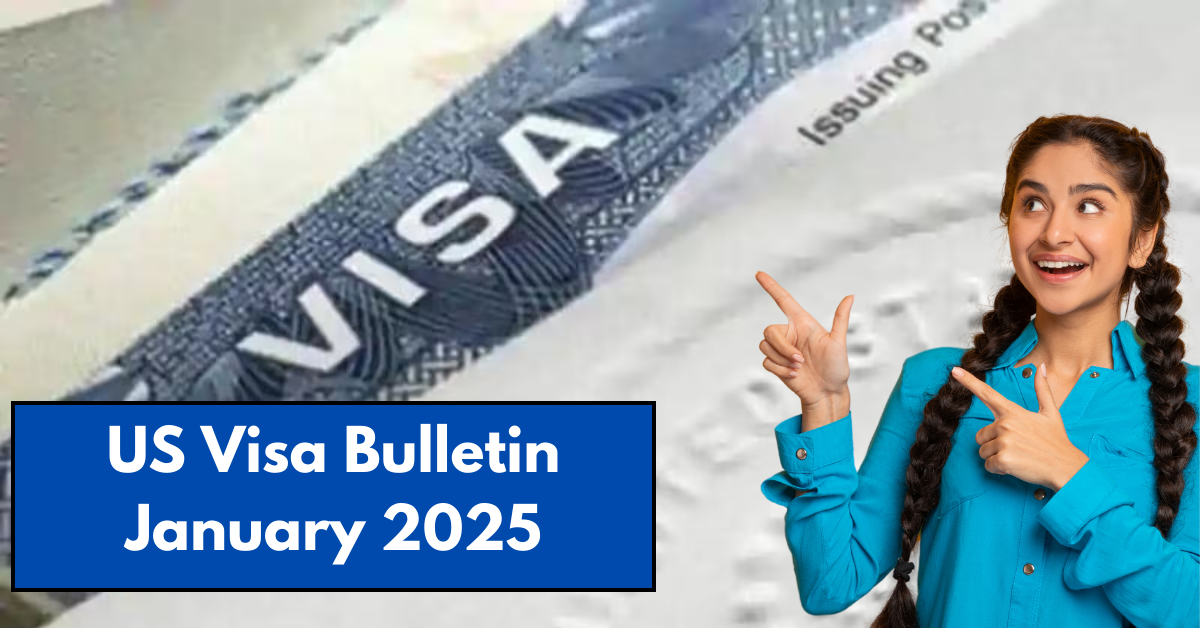The U.S. Department of State has released the January 2025 Visa Bulletin, which provides vital updates for immigrants waiting for visas under various categories. This bulletin is especially crucial for those hoping to secure employment-based and family-sponsored visas to live and work in the United States. For many applicants, this bulletin is a key resource for understanding where they stand in the green card process, particularly regarding the Final Action Dates and the Dates for Filing Applications.
What’s Inside the January 2025 US Visa Bulletin?
The Visa Bulletin is a monthly publication issued by the U.S. Department of State, offering updates on when applicants can submit their documents and when their visa applications may be approved. This process is crucial for foreign nationals seeking to join family members in the U.S. or gain employment opportunities.
For January 2025, the bulletin outlines the availability of immigrant visas across several key categories, impacting applicants based on their family relationships and employment status. This includes employment-based visas (such as the EB-2 and EB-3 categories) and family-sponsored visas for U.S. citizens and permanent residents.
Family-Sponsored Visa Preferences
One of the most important sections in the bulletin relates to family-sponsored visa preferences, which include categories for unmarried children of U.S. citizens (F1), spouses and children of permanent residents (F2A), and married children of U.S. citizens (F3). Here are the key changes:
- F1 (Unmarried sons and daughters of U.S. citizens): No changes in the final action dates, with applicants from India, China, and other countries facing similar waiting times as in the previous month.
- F2A (Spouses and children of permanent residents): Dates for filing have remained stable, meaning applicants can expect no delays in processing from countries like India or Mexico.
- F2B (Unmarried adult sons and daughters of permanent residents): India and other nations also experience consistent waiting periods.
The Visa Bulletin clarifies that applicants need to be aware of these dates to submit documents on time to the National Visa Center. Missing these deadlines could delay their chances of visa approval.
Employment-Based Visa Preferences
The employment-based visa categories (EB-1, EB-2, EB-3) are another crucial aspect of the bulletin. These visas are for professionals, skilled workers, and those with exceptional abilities. The bulletin shows that while Final Action Dates for some categories have seen minor shifts, others remain unaffected.
- EB-2 (Advanced Degree Holders or Persons of Exceptional Ability): Applicants should pay attention to changes in their filing dates for certain countries, with India continuing to experience longer wait times due to high demand.
- EB-3 (Skilled Workers, Professionals, and Other Workers): Significant progress for certain countries, such as a quicker path for some nationalities compared to India and China, where the process is slower.
The bulletin also highlights that there has been a noticeable increase in approvals for applicants under the EB-5 set-aside program. This program is particularly important for investors and their families, as it is dedicated to those creating jobs in rural areas or high-unemployment regions in the U.S.
Key Takeaways for Applicants
If you are an applicant looking for an update on your U.S. visa application, the January 2025 Visa Bulletin provides essential information to help you understand your next steps. Here are some tips to keep in mind:
- Monitor Final Action Dates Regularly: These dates tell you when you can expect to move forward with your visa application. Tracking these dates can help prevent delays.
- Stay Informed About Filing Dates: Being aware of filing dates helps ensure your documents are submitted on time to avoid unnecessary delays.
- Consult the National Visa Center: If you’re unsure about your case’s status, it’s important to regularly check for updates on the National Visa Center’s website.
- Plan for the Long Term: Immigrants applying under categories like EB-2 or EB-3 should be prepared for longer waiting periods, especially for applicants from high-demand countries like India.
For a comprehensive understanding of the latest updates, applicants should stay connected with official resources like the U.S. Citizenship and Immigration Services (USCIS) website and the U.S. Department of State. These agencies provide the most reliable and updated information to help navigate the evolving immigration landscape effectively.
In summary, the January 2025 U.S. Visa Bulletin offers crucial guidance to both family-sponsored and employment-based applicants, ensuring they know when to file and when they can expect progress in their visa applications.
This article has been carefully fact-checked by our editorial team to ensure accuracy and eliminate any misleading information. We are committed to maintaining the highest standards of integrity in our content.
Premlata is a seasoned finance writer with a keen eye for unraveling complex global financial systems. From government benefits to energy rebates and recruitment trends, she empowers readers with actionable insights and clarity. When she’s not crafting impactful articles, you can find her sharing her expertise on LinkedIn or connecting via email at biswaspremlata@gmail.com.
